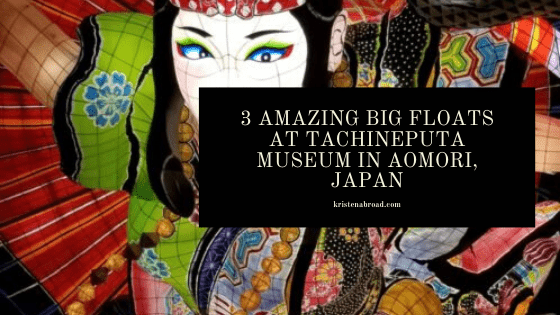When I told my coworkers that I was going to Aomori, they lit up and asked if I was going to the Neputa Festival. The what? They quickly pulled it up on Google as one of the four largest festivals of the region known as Tsugaru. However, the festival was the weekend before I was going. However, where there’s a festival, many times you can find a festival museum! Thanks to the crazy travel required to get to Takayama Inari Shrine, I had some time to kill in Goshogawara. Always look for tourist centers in Japan! The kind lady pointed me to the 立佞武多の館 (Tachineputa no yakata, Tachineputa Museum).
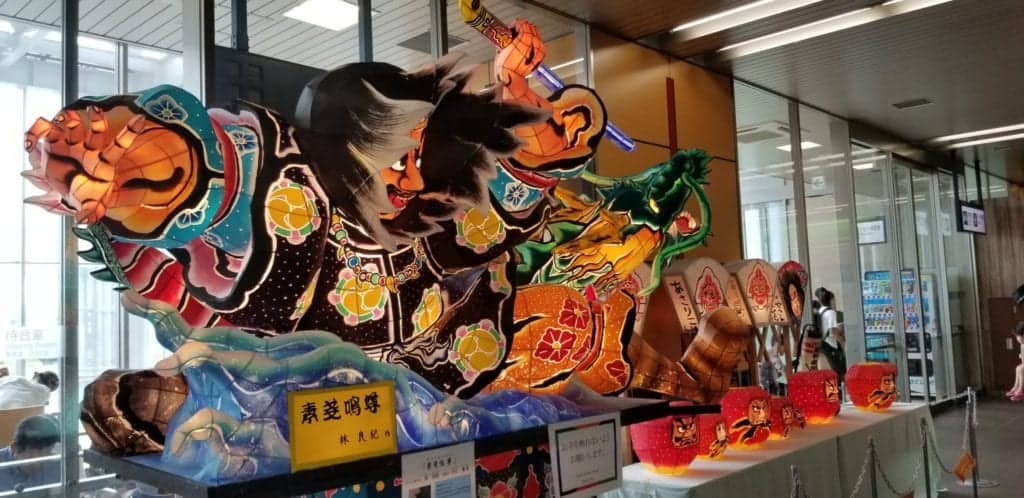
The cultural regions of Aomori
Aomori is made of up three distinct regions: Tsugaru, Nanbu and Shimokita. Each having a slightly different cultural aspect and lifestyle based off climate and historical differences. That includes dialect and why you see 佞武多 spelled “nebuta” or “neputa”.
Tsugara consists of Aomori and Hirosaki as it’s larger cities and includes as well Goshogawara. If you get hungry after the Tachineputa museum, make sure to try out some of the local Tsugara cuisine.
Goshogawara Tachineputa Festival
The Goshogawara Tachineputa Festival, along with Aomori Nebuta Festival, Hirosaki Neputa Festival, and Kuroishi Yosare Festival, are all considered Important Intangible Folk Cultural Property by the Japanese government. They are also the most known and considered “The big 4” of the Tsugaru region.
The festival in Goshogawara takes place every year from August 4-8th in which 15 massive floats “Tachineputa” take over the city. Some 23-meter tall and weighing a whopping 19 tons!! The float carriers and dancers shout “Yattemare! Yattemare!”, which translates into a sort of “let’s do it!”, as they spend two hours every night of the festival hauling these monstrosities around the city.
So What’s a Neputa or Nebuta?
There are a lot of theories. Deter invading clans, a long forgotten Shinto practice or some think it descended from a festival from China. Where the romanized version normally writes it as “nebuta”, the dialect has it as “Neputa” (unless you’re in Aomori and they use the “b”), the sound is very similar in Japanese.
The Nebuta are sometimes small, sometimes quite large paper lantern floats that get paraded around the city. Outlawed frequently in the past due to fire risk as they were lit up by candles. Now with modern technology and electricity, it’s slightly easier to not catch them on fire.
As I like to break down the kanji, 佞武多 is sort of interesting pieces. “Insincerity”, “warrior” and “many”. Makes you wonder who came up with that combination or what exactly it’s talking about.
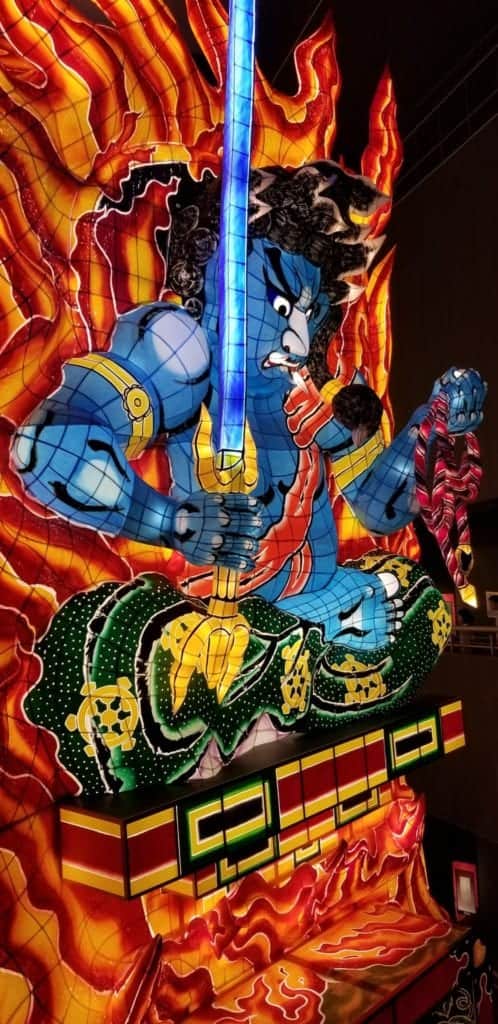
Tachineputa Museum (立佞武多の館)
Goshogawara has unique nebuta. “Tachi” means stand, and stand these do. There are three of the festival floats housed in the giant 5 story tall Tachineputa-no-Yakata museum (how to pronounce Tachineputa museum in Japanese). I saw a few others being put into warehouses by the station as well!
Fun fact: 館 or “Yakata” actual is more like a “big building” or even “mansion”. Where was I understand the use of the word museum, I think it would be much more fun that the floats are “living in a mansion”.
Walk yourself around the spiraled slope that wraps the entire building. You get to see every angle for the three housed inside. There is also an film to show you the feeling of the festival itself that runs about once every hour.
I’m sure seeing the festival with its flute and taiko resonating through the city would be amazing, but to be able to be eye to eye with the very top of these feats of engineering (because they really are), is something else.
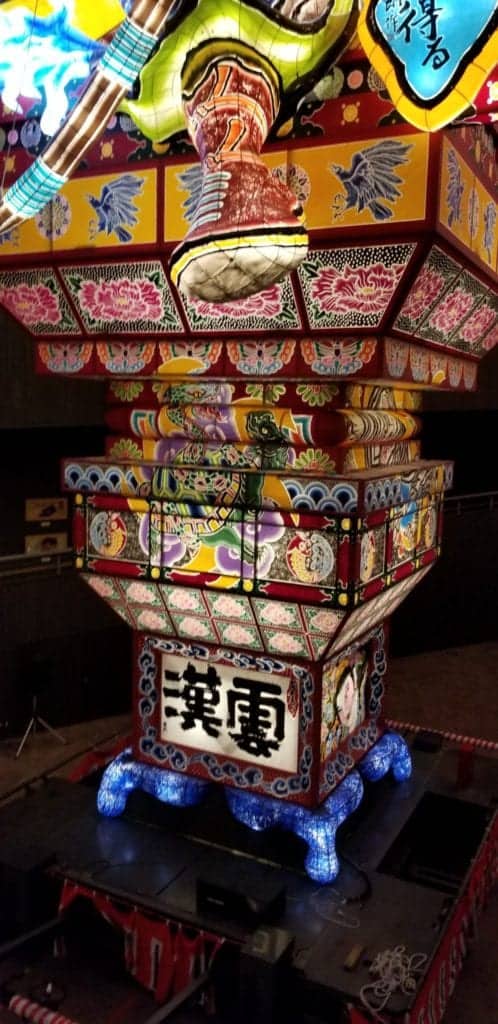
If seeing the floats wasn’t enough for you, for an extra fee you can create a small goldfish neputa to take home with you! The entrance to the museum is 650 yen for the exhibition hall and 300 yen for the art museum where you can learn more about the detail. A combined ticket is 850 yen — always look for combo deals on entrance fees in Japan!
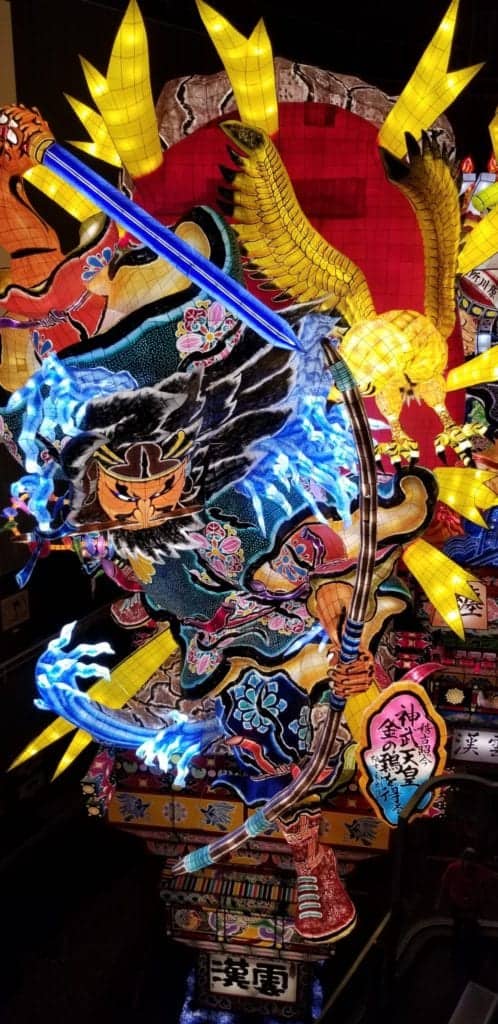
Getting to the Museum
If you are following my itinerary for a weekend trip in Aomori, this will be one of your stops. The festival and this museum take place in a super small town so it’s unlikely you’ll pass through unless you are meaning to go! From JR Goshogawara Station it’s a super easy walk. Don’t worry, you’ll see the building, it’s the tallest around.
Festival or Museum?
If you’re in Japan during that time, try and make the trip! Else, know that you can enjoy these beautiful pieces of art year round at the Tachineputa Museum.
What’s one of your favorite Japanese cultural events?
Pin this for later.

